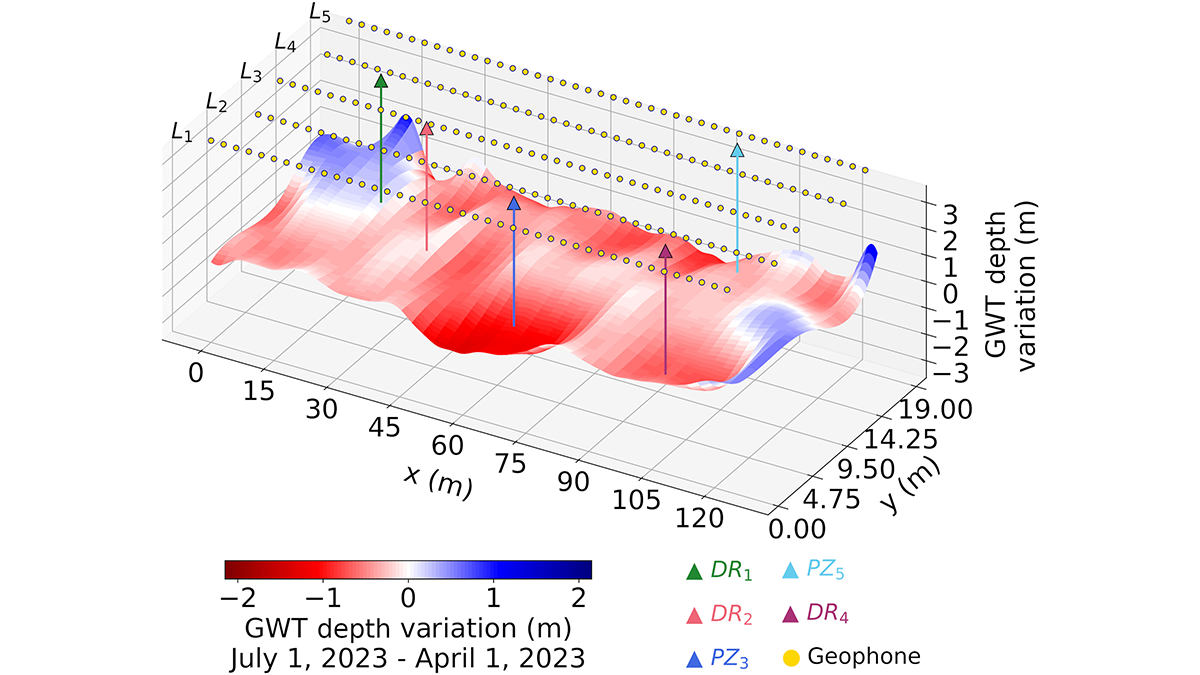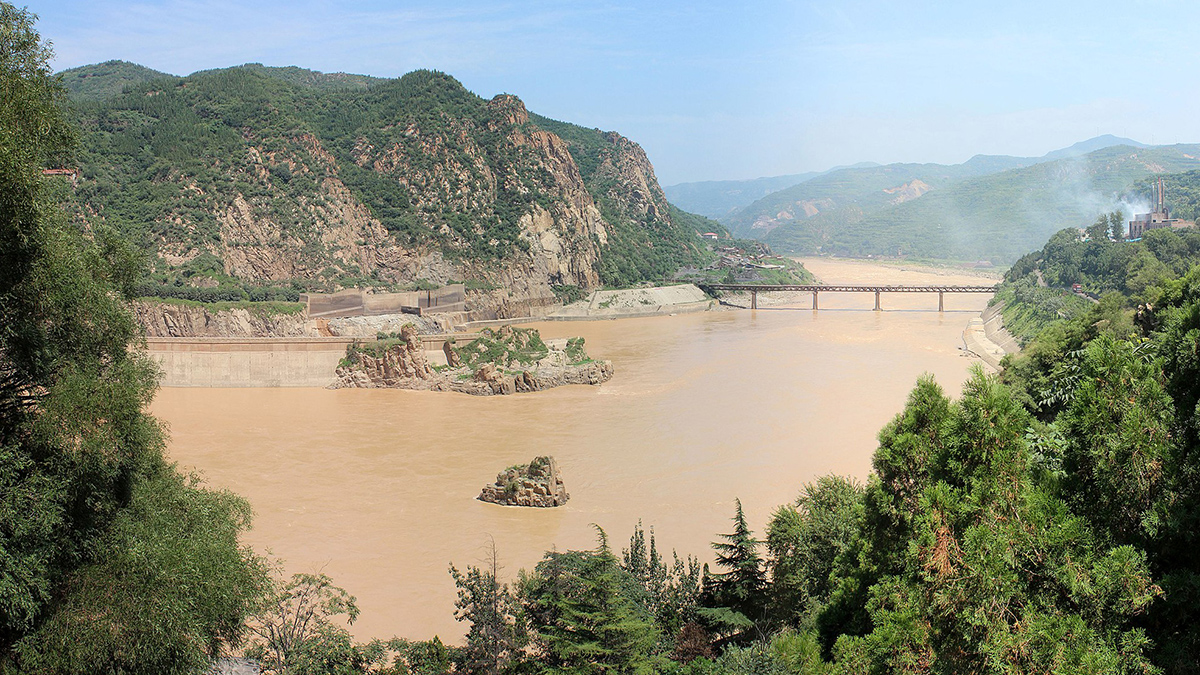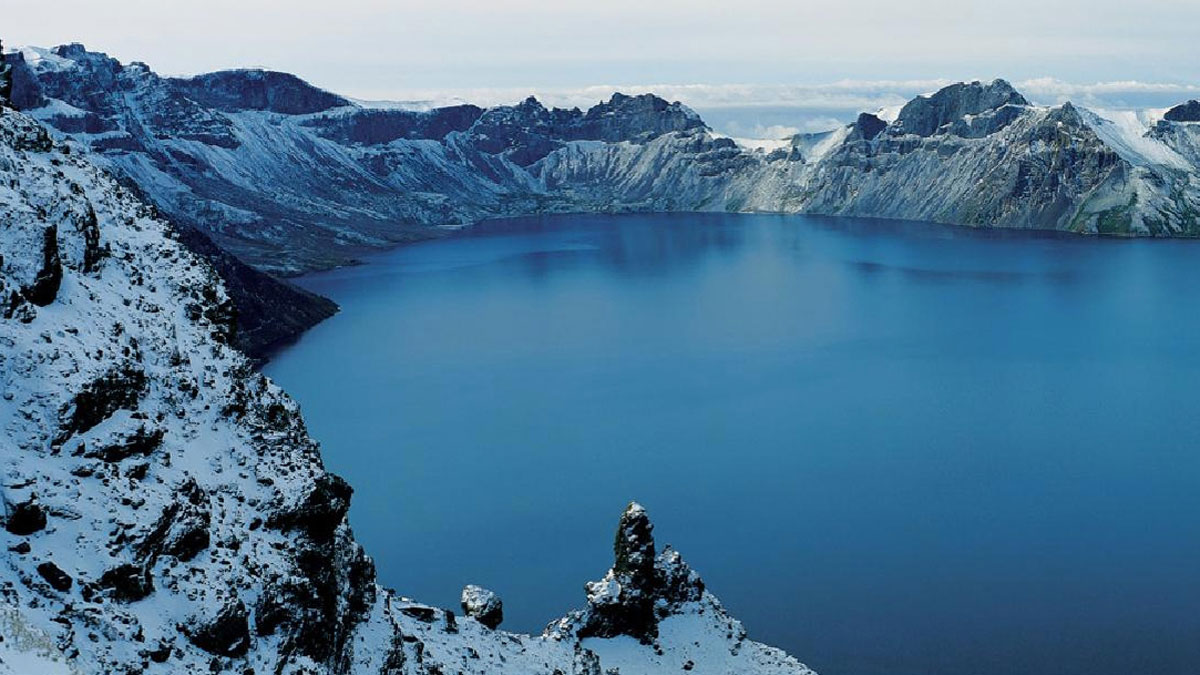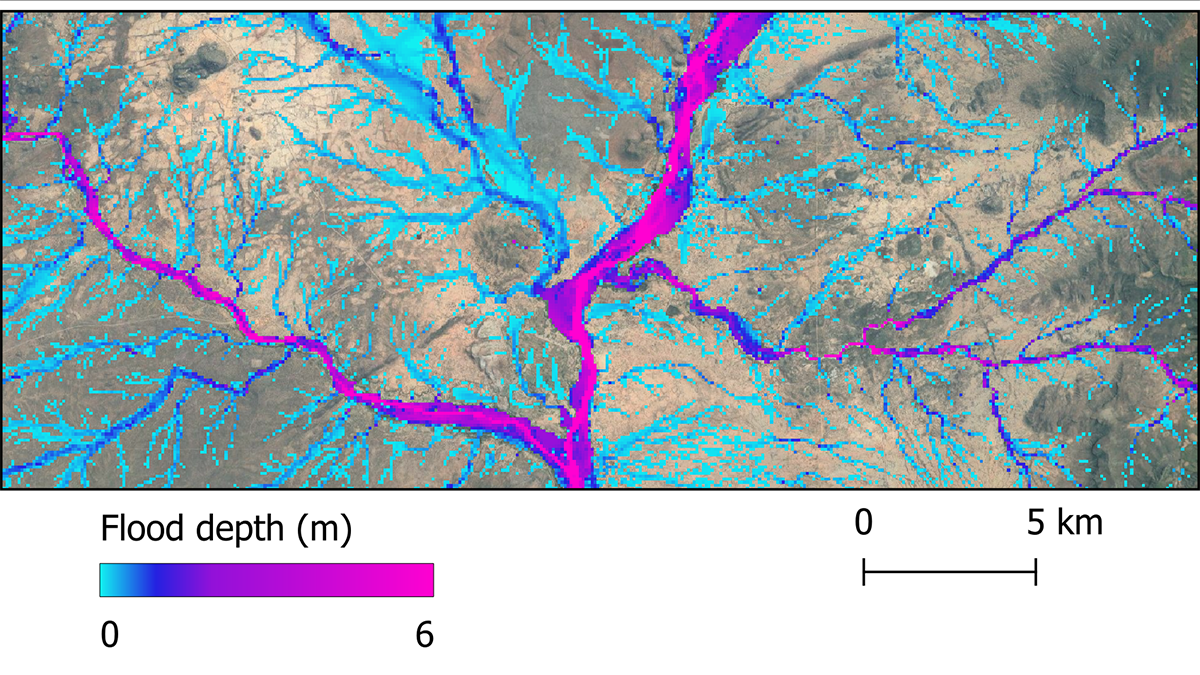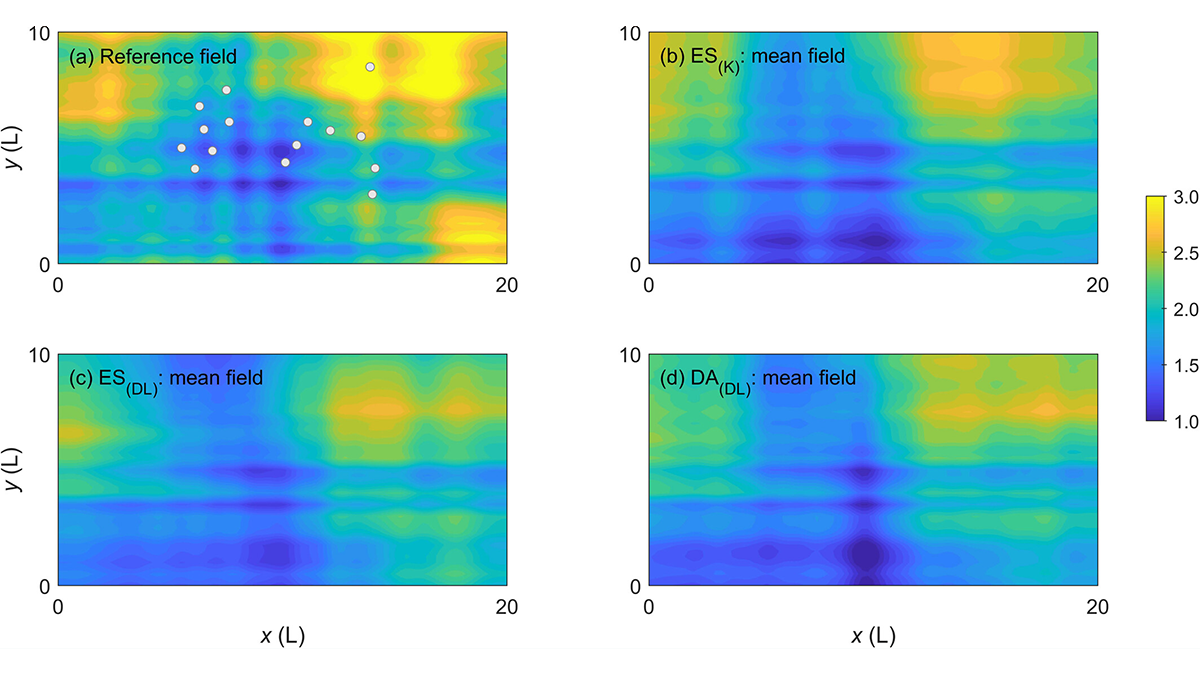Deep learning from shallow passive seismic data reveals groundwater table depth information in space and time.
Water Resources Research
Tracing Metals from Earth to Water to Life in the Yellow River
The mix of metals in China’s Yellow River stays relatively similar as it moves from the upper continental crust to biological life.
How Does Subsurface Lithology Speak to Hillslope Morphology?
Subsurface flow hydrology connects soils and bedrock lithology to long-term catchment evolution in humid landscapes.
New Details About a Very Old Eruption and Flood
One of the most dramatic volcanic eruptions in history occurred more than 1,000 years ago. Scientists are still piecing together the aftermath.
Future Global Flood Hazards at Unprecedented Accuracy
A global flood hazard map at 30-meter resolution is constructed using latest hydrology, topography, and climate data, and its accuracy is approaching that of local to regional scale flood inundation maps.
Learning Data Assimilation Without the Help of the Gaussian Assumption
Major Earth system processes are non-linear and non-Gaussian, and so should be our data assimilation approaches.
When It Rains, It Pours!
Water that falls on a forest canopy during rainfall events reaches the ground at focused locations called “pour points”. This insight has a major impact on how we view hydrologic processes on the ground.
What Happens to Nutrients After They Leave Agricultural Fields?
To better quantify the fate of nutrients after they are released from agricultural fields, scientists examine storage and nitrate export regimes in agricultural hydrology systems.
Benefiting Society with Translational Water Research
A new special collection welcomes translational research contributions that bridge the gap between scientific knowledge and practical applications regarding water as a key societal resource or a risk.
AGU Publications Opens Science: Making Science Accessible and Equitable
To celebrate the Year of Open Science, we highlight our efforts to make AGU journals and books more open, accessible, and inclusive.

